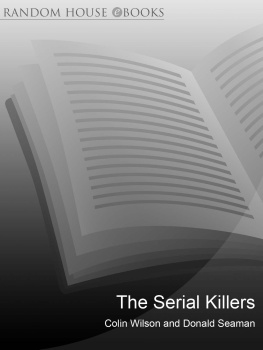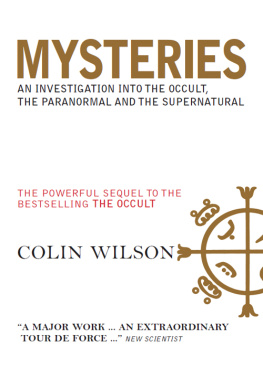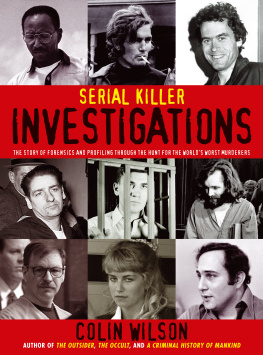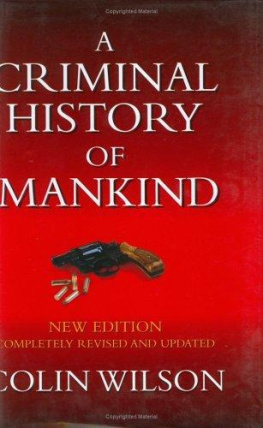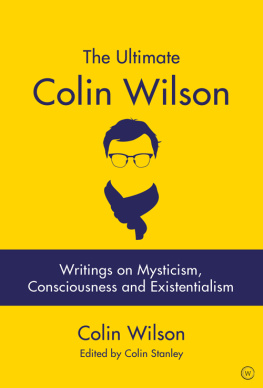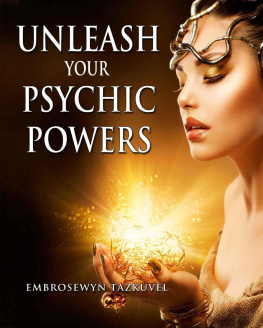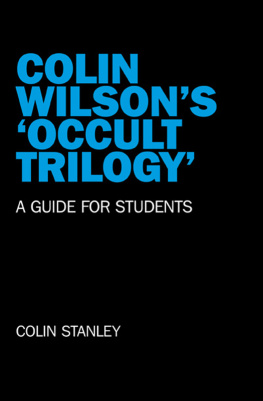Foreword
by Damon Wilson
I N THE winter of 1969, when I was 4 years old, our family spent most of the winter in Deya, in Majorca. My memories of the place are not very clear: I chiefly recall the small boy called Pedro, who lived next door and who drew pictures in the dust of the courtyard, with a stick, and a tall man in a cloak and an odd-shaped hat who walked into the house one day and showed my mother how to split a banana into three with his thumb-nail. From the fact that he presented me with one of his booksa childrens story called The Poor Boy Who Followed His Star I gathered that he was a writer like my father. Years later, when I became an avid fan of the I, Claudius series on television, I was impressed to realise that I knew its author.
What I did not know was that my father had asked Robert Gravess advice on writing a book about the occult, and that that advice had been dont. It was as well he ignored it, for the book and its consequences became an important part of our lives during the next few years. It ledto begin withto a BBC television series called A Leap in the Dark, in which my father was the presenter. We bought our first video machine to record themthe early kind whose tapes played for a maximum of one hourand so videos became a part of our lives long before they became as common as televisions. One result was that I was able to watch the Leap in the Dark series as often as I liked. The creepiest was the Edgar Vandy case, in which a dead man came back to describe his accidental drowning through the mouth of a medium. The point of the programme was to try to show that only the dead man could have provided the information, and that telepathy by the medium could not account for the complex data she was able to provide. But the one I remember most was the case of a girl called Christine Beauchamp, who suffered from multiple personalityshe periodically turned into a scatterbrained and mischievous child who called herself Sally, and who embarrassed Christine by doing mischievous things that landed her in all kinds of trouble. Then there was the account of the poltergeist which wrecked the office of a German lawyer in Rosenheim, and which subsided only when a shy, nervous girl called Anne-Marie was sacked. I was intrigued to learn that this was not a real ghost, but some kind of manifestation of Anne-Maries unconscious frustrations.
All this meant that, by the age of 10,1 had a fairly good working knowledge of the paranormal, which I accepted in the same matter-of-fact way that I accepted all the books and magazines about true murder cases that lay about the house. Like any normal 10-year-old, I would not have wanted to meet a ghost; but I was intrigued to learn that they could be explained by a science called parapsychology.
One day I learned that it was not quite as simple as that. A man called Mike Delaney came to stay with us, and I learned that he was a publican who had been driven out of his pub by a poltergeist that smashed rows of bottles and glasses, and made the electronic tills go haywireMike was still suffering from nervous strain. My father was writing a book about poltergeistsand had been to Croydon to look into the case. There were apparently no disturbed adolescents associated with the pub, and Mike himself had no doubt that the culprit was a spirit. I talked to Mike for hours, and noted that he preferred not to discuss the hauntingit was obvious that he was still deeply disturbed by it. In fact, he went to see our doctor, and took his advice to commit himself to our local mental home in Bodmin. (That quickly proved to him that there was nothing wrong with him, and he discharged himself and went off to Africa to become a mercenary.)
My father also went to Yorkshire to look into the case of a spirit that had wrecked every breakable object in the house (see ). When he came back, he was finally convinced that poltergeists are real spirits, and not just the unconscious energies of frustrated adolescents. Obviously, it was possible to be too scientific.
But another experience of the time also demonstrated that it was possible to be too credulous. When my mother was going to Bodmin one day, my father asked her to go and look at St Marks Church, and see if she could find out anything about a poltergeist haunting there. A journalist called John Macklin, well-known for his believe it or not stories, had described how a coffin had risen up off its trestles and floated down the aisle. The man in the coffin, a Liskard builder called Pencarrow, objected to being buried near his estranged wife, and his spirit caused poltergeist disturbances until his son decided to bury him elsewhere. There was even a bare patch on the lawn of the churchyard, where Pencarrows coffin had rested before being taken awayno grass had grown there since. My mother was asked to try and get a photograph of the bare patch.
In fact, she found that there was no St Marks Church in Bodmin, or even in Cornwall. The vicar, the Rev. Basil Bradley, had never lived in Bodmin. And no builder called James Pencarrow had lived in Liskard either.
Another story by John Macklinabout a cursed field in North Cornwallproved to be equally unfactual. When my father wrote to Macklin asking for an explanation, he got an angry letter in reply protesting that no one had ever questioned his accuracy, but offering no other explanation. All of which seemed to demonstrate that the science of parapsychology had to tread an extremely wary path between scepticism and credulity.
In fact, what tends to happen is that the positions become polarised; the sceptics attack the believers as gullible idiots; the believers attack the sceptics as dogmatic materialists. Both seem incapable of moderation or objectivity. The career of the French statistician Michel Gauquelin illustrates both positions. By the age of 7 he was a total convert to astrology, and could rattle off the character-types associated with each sign of the zodiac; his friends called him Nostradamus. While studying at the Sorbonne, he learned of the earlier researches of Hitlers astrologer Karl Ernst Krafft, who had tried to prove astrology by statistical means. Krafft had studied the horoscopes of thousands of professional men, mostly musicians, and announced that he had proved that individuals are cast in the mould of their sun sign (i.e. Aries are pioneers, Geminis changeable, Cancers home-loving, etc.) Gauquelin, who was studying statistics and psychology, decided to put Kraffts results through a computer. That convinced himas he had suspectedthat Krafft was deceiving himself. His reaction was to become a determined opponent of astrology who missed no opportunity to denounce it as nonsense. He even went so far as to ignore the occasional fact that supported astrology. But since he was a statistician, he continued with his research. And when he looked into the question of rising signs (the planet that is coming up over the horizon at the moment of birth) he was startled to realise that the evidence was no longer negative. In a group of 576 doctors, he discovered that a significant proportion were born under Saturnas astrology predicts. Similar researches into actors showed that Jupiter was their rising sign, while sportsmen tended to be born under Mars. He also investigated the notion that people born under the even signs (Taurus, Cancer, Virgo etc) are introverts while those born under the odd signs are extraverts; again he was surprised to find that his statistics supported this view.



